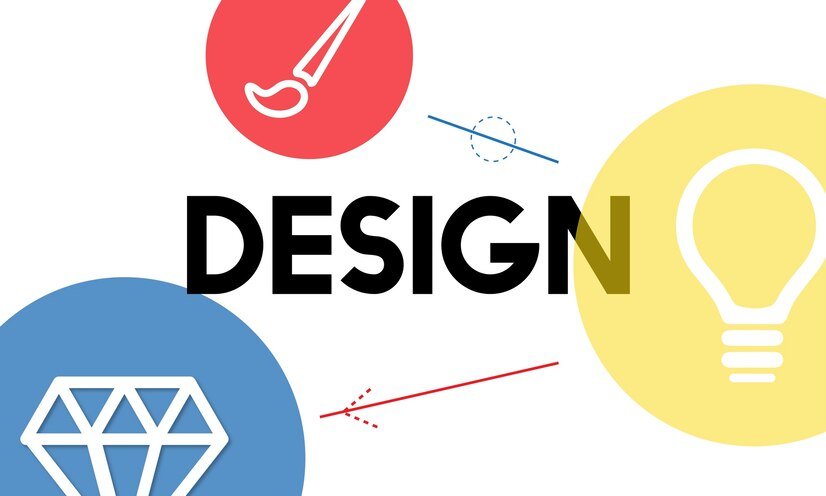The Do’s and Don’ts of Logo Design

Designing a logo is one of the most important steps in creating a strong brand identity. A logo is often the first interaction a customer has with your brand, making it crucial to get it right. Whether you’re designing your own logo or working with a professional, understanding the essential do’s and don’ts of logo design can help you avoid common mistakes and ensure your logo effectively communicates your brand’s message. This guide covers the key principles to follow and mistakes to avoid, ensuring your logo is memorable, versatile, and impactful. By adhering to best practices and steering clear of common pitfalls, you can create a logo that elevates your brand’s identity and sets you up for long-term success.
Do Keep It Simple
- A simple logo is often more memorable and easier to recognize. Avoid overly complex designs that can confuse the audience.
- Focus on clean lines, a limited color palette, and minimalistic design elements.
- Simple logos are also more versatile and work well across various mediums and sizes.
Don’t Use Too Many Colors
- Limit your color palette to ensure your logo looks clean and professional.
- Too many colors can make your logo appear chaotic and reduce its effectiveness.
- Choose colors that reflect your brand’s personality and the emotions you want to evoke.
Do Make It Scalable
- Ensure your logo looks good in all sizes, from small icons on a website to large billboards.
- Design your logo in vector format for scalability without loss of quality.
- Test the logo’s visibility and clarity at both large and small sizes.
Don’t Rely on Trends
- While it’s tempting to incorporate current design trends, logos that are too trendy can quickly become outdated.
- Aim for a timeless design that will still be relevant and effective years down the road.
- Focus on creating a logo that embodies your brand’s core values and personality.
Do Ensure It’s Unique
- A unique logo helps differentiate your brand from competitors and makes it more memorable.
- Avoid copying other logos or using overly generic symbols that are widely used in your industry.
- Your logo should be distinctive enough to stand out in your market and industry.
Don’t Overcomplicate with Text
- Logos with excessive text can be difficult to read and recognize, especially when scaled down.
- Keep the text to a minimum, using only essential elements like the brand name or initials.
- Opt for strong typography that is easy to read in various sizes and formats.
Do Consider Your Audience
- Understand your target audience’s preferences, values, and emotional triggers.
- The design elements, color scheme, and style of the logo should appeal to the audience’s tastes and expectations.
- Ensure your logo communicates the right message to the people you are trying to reach.
Don’t Ignore Versatility
- Your logo should look great in different formats and across various applications (websites, social media, print, etc.).
- Test how your logo looks in black and white, and ensure it’s effective in both color and monochrome.
- Make sure it can work on different backgrounds and be adaptable to both digital and physical media.
Do Focus on Legibility
- A logo must be easy to read and understand at a glance.
- Avoid using overly decorative fonts or intricate details that may make the logo difficult to decipher, especially in smaller sizes.
- Ensure your font and design choices align with your brand’s voice and tone.
Don’t Use Clipart or Stock Images
- A logo made from stock images or clipart lacks originality and can appear unprofessional.
- Always opt for custom-designed elements that reflect your brand’s unique identity.
- Invest in creating a logo that feels authentic and one-of-a-kind.
Do Keep It Balanced
- A well-balanced logo is visually appealing and easy to understand. Make sure the elements are proportionate and aligned properly.
- Avoid heavy reliance on one side of the design, as it can make the logo feel unbalanced.
- Maintain visual harmony between the text, symbol, and other design elements.
Don’t Overcrowd the Design
- Avoid trying to fit too many elements into your logo. A crowded logo is hard to read and can confuse your audience.
- Stick to a few key elements that are essential for conveying your brand’s identity.
- Simplify the design to make it more effective and impactful.
Do Test for Recognition
- A great logo should be easily recognizable and able to stand out among competitors.
- Test your logo in various contexts and see how well it performs in different situations (social media, website, print).
- Ask others for feedback to gauge whether the logo resonates with your intended audience.
Don’t Forget to Align with Your Brand Values
- The logo should reflect the essence of your brand and what it stands for.
- Avoid designs that don’t align with your company’s values or goals.
- Ensure the logo speaks to the mission and vision of your business.
Do Use Proper Spacing
- Proper spacing between the logo elements is essential for clarity and readability.
- Crowding elements together can make the logo appear cluttered and difficult to understand.
- Ensure there’s enough white space around your logo to help it stand out.
Don’t Overuse Effects
- While gradients, shadows, and other effects can be tempting, they can quickly make a logo look outdated.
- Use effects sparingly and only when they enhance the overall design, not when they overwhelm it.
- Focus on creating a logo that remains effective and clear without relying on special effects.














